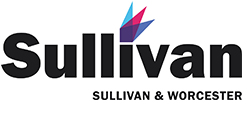Written by Ellis Lawson and Maria Capocci
Our latest Trade & Export Finance webinar, delivered by Maria Capocci (Associate) and Ellis Lawson (Partner), considered the different types of environmental, social and governance (ESG) loans and their current position in the finance market. The webinar also provided a practical insight into the key concepts behind the LMA's draft sustainability linked loan (SLL) provisions and how parties may look to negotiate those provisions.
Sustainability-linked loans are here to stay
The efficacy and integrity of sustainable finance products has come under increasing scrutiny in recent months, as concerns have been raised about greenwashing in the sustainable finance market. Very public criticism has included the FCA warning of “the possibility of potential risks to market integrity and suspicion of greenwashing in the context of SLLs” and negative press coverage of an SLL made to Shell, which reportedly allowed Shell to benefit from margin reductions linked to achievement of a “carbon intensity” KPI, even as its total emissions increased.
While such scrutiny and potential reputational damage may cause lenders and borrowers alike to reconsider their use of these products, in our view SLLs are very much here to stay and will remain an important part of the finance market. With the global drive towards reducing greenhouse gas emissions well underway, controlling access to finance looks set to become an important tool in driving transition. Currently, much of the regulatory framework relates to disclosure, but as target dates for emissions reduction approach, regulators’ attention is likely to shift towards influencing allocation of capital to support a transition to net zero. Sustainability-linked loans and bonds and other sustainable finance products will have an important part to play.
In our view therefore, the importance of SLLs and other sustainable finance products looks set to continue to grow in the coming years. However, clearly there are lessons to be learned from recent criticism and it will become increasingly important for market participants to ensure that their sustainable financings are robust and fit for purpose, in order to ensure that they actually support transition rather than further exacerbating greenwashing concerns.
LMA drafting – untangled
The LMA’s drafting for SLLs (alongside its SLL principles and guidance) is a helpful starting point for those seeking to implement SLLs, bringing together developing market norms and best practice. The drafting is however only a starting point and, as this is a developing area of finance, practices vary and many points continue to be negotiated on a transaction-by-transaction basis.
Broadly speaking, the LMA drafting can be split into five key areas:
- Key Performance Targets (KPIs) and Sustainable Performance Targets (SPTs): These are indicators against which a borrower’s sustainability performance is assessed. KPIs must be relevant, core and material to the overall business and SPTs must be ambitious.
- Margin Rachet: Margin will increase or decrease depending on the borrower’s achievement (or non-achievement) of SPTs.
- Reporting: This relates to the periodic evaluation of a borrower against SPTs and provides lenders with visibility in respect of the borrower’s performance.
- Verification: This is achieved through an independent external assessment of the borrower’s performance against each KPI and SPT and is set out in a verification report.
- Declassification: This is where a loan ceases to be classified as an SLL on the occurrence of specific triggers.
We discuss key considerations and negotiating points in respect of each of these areas in our latest webinar.
Further information
Please click here for a link to a video of the webinar, and here for the accompanying slides.
For further information on sustainable financing, please contact Ellis Lawson, Maria Capocci or your usual contact at the firm.



